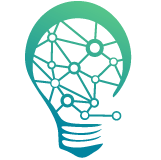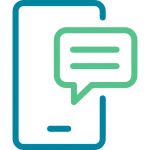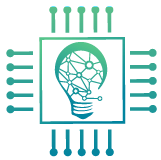
ELECTRONICS PRODUCT DESIGN
Concept To Creation!
Transform your innovative ideas into products.

Creative Ideas

Conversations

Make it Possible!
Free Consultation- No Obligations !!
Get a no-obligation opportunity to examine your product idea and explore the issues you face.

ELECTRONICS PRODUCT DESIGN PROCESS
See how we do it!
We feel proud to design professional Quality and Practical products.
Block Diagram
BOM & Schematic Circuit
PCB Layout & Fabrication
Firmware & Enclosure
*REST is OK*

SEE WHAT WE DO!
Product Design Services at PCB Orbit
Your imagination and our product design skills, succeeding together
We create products that are suited for the commercial market and solve a purpose. This is accomplished through ongoing refinement and iteration.
Instead of rushing up a job, we take the time to get it right. When we decide what is required to make your product effective and indispensable, we spare no effort to refine and optimize the design until it achieves maximum potential.
Healthcare 'more for less'
Agriculture Automations
Arduino Devlopmenst
Home Automation
Automobile Sensor
Industrial Control
IoT Hardware
Electrical Design

STEPS WE FOLLOW
Electronics Product Devlopment Life Cycle
A well-practiced design and development cycle for an electrical and electronic product involves several steps. Here are the main steps we’ve established, that are necessary to design a functional electronic hardware product.
1. IDEA GENERATION
“Necessity is the mother of Innovation”. This is the phase in which the concept of a new product, the modification of an existing product, or the discovery of the need for an unknown product is carried out. This helps us identify the product, its demand, and a strategy for the development of that product.
2. RESEARCH
At this step, the product’s idea is used to carry out research involving the identification of the technology, the process, and vendors that shall be involved in the development of the product. Research analysis helps to estimate the cost of the design process and approximate manufacturing costs. We also need to define electronic design guidelines like U.L., F.C.C., C.E. in this step.
3. SCREENING AND FEASIBILITY CHECK
The objective of the screening is to avoid those ideas which do not seem to have a high potential and therefore prevent the costs involved at the respective steps. The feasibility analysis includes demand research, availability of resources, economic analysis, and technical & strategic analysis.
5. ENCLOSURE & PCB DESIGN
In this step, an adequate enclosure is designed or picked for the hardware. This specification of the enclosure, as well as the internal and external connector, switches, and screens must be selected prior to the layout of the PCB begins.
The first step in product PCB design is the mechanical pattern or outline of the board assembly itself.
6. PROTOTYPING
‘Fail faster, Succeed sooner!’ Prototyping is the first step towards success. It helps not only to recognize and determine the main path of the hardware design process but also saves time.
7. CHECK DFM & DFA (Design Review)
Design for Manufacturing and Assembly (DFM or DFA) is a vital step of the product development life cycle. It requires optimizing the electronic hardware design for its manufacturing and assembly phase. It also involves integrating the design specifications of the product with its manufacturing process. The use of DFM techniques reduces the expense and complexity of making a product while retaining its performance.
8. FIRMWARE DESIGN
‘Create a product with soul’. Firmware gives life to the product and enables it to do something meaningful. Firmware is a software/program running inside a microcontroller to do application-specific tasks.
9. PILOT RUN & TESTING
The pilot run involves Testing your new product prototype with colleagues, friends, and financiers. It needs to be tested in the field to check, whether every part is functioning properly.
10. DOCUMENTATION
Documentation involves circuit diagrams, Bill of Material, PCB Layout, source components, firmware/source code and documents, mechanical and assembly drawings, and all other things used as part of the electronic hardware product design.
This bundle must include enough material to make the hardware design process possible for any qualified assembly agency.
11. FOLLOWUP
Once a product is released into production; experience in the manufacturing plant and user feedback, must all be reviewed for the purpose of influencing future designs. Don’t ignore this important step towards increasing efficiency, value, and sometimes reduced costs.

FREQUENTLY ASKED QUESTIONS
Product Design FAQ
Please read the electronics product design Queries below and if you don’t find the answer please send us your question through contact forms. We will reply as soon as possible.
The overall cost of starting from a design to a working electronics product depends on the electronics and product complexity. For example, the cost of designing, prototyping, developing, and producing an IoT-based energy meter would vary from $2000 to $20,000 + depending on functionality, material selection, manufacturing, and assembly processes.
A good product design must be Innovative, Useful, Aesthetic, Understandable, Honest, Long-Lasting, Environment friendly, and as Simple as possible. It must concentrate on the essential aspects and not be burdened with the Non-Essentials.
Electrical systems are sets of electrical and electronic components connected to perform some meaningful operations like motor speed control, power factor control, home automation, etc.
Steps to make an electronic product
- Idea Generation
- Research
- Screening and Feasibility Check
- Circuit Design
- Enclosurer and PCB Design
- Prototyping
- Check DFM & DFA
- Firmware Design
- Pilot Run & Testing
- Documentation
- Follow up
Read complete detail process of product design hear..
The steps we follow to design a circuit are.
- Set your circuit objectives
- Create block diagram of all the necessary blocks for this circuit
- Design each block
- Put the circuit block inside one schematic/circuit diagram
We have some standard steps to follow while creating an electronics product prototype. From concept to creations we follow these steps.
Ready? Let’s Design a Product to Solve Real Problems.
We partner with companies both Large and Small to shape the technology that delights users and makes businesses more successful.